What Type of Baby Carrier Should I Invest In?
When you first start babywearing it is common to have two thoughts:
- What are all the different types of carrier options available to me?
- Which one is best for me right now?
While there are MANY different types of baby carriers from all over the world, six types are the most commonly used in Australia. In this article we will describe them, their main features, and common experiences with each of them, to hopefully help you figure out which one might be best for you!
Stretchy Wrap
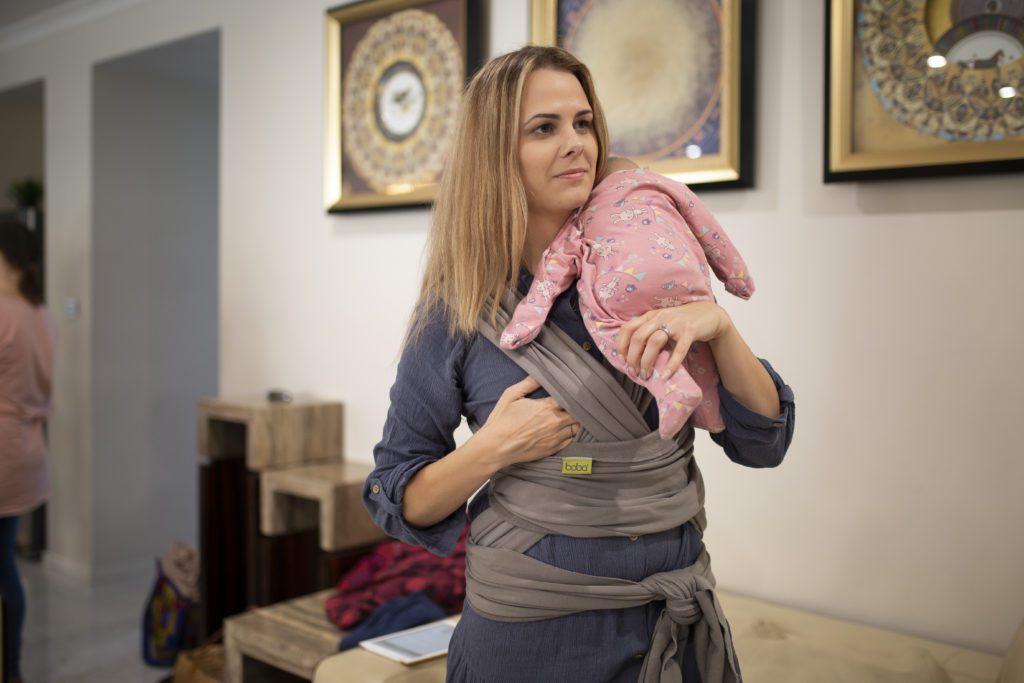
Many new parents start with a stretchy wrap. These are long, narrow pieces of material with plenty of stretch. The thickness of the wrap and blend varies from brand to brand, but can include cotton, bamboo, spandex, and polyester.
Stretchy wraps can be used multiple times a day and are fairly simple to use. They can be pre-tied, so that you can get it all set up without having to juggle your baby at the same time. You can also put it on at home, then pop your little one straight in from the car seat once you’re out of the house. They are also super soft (very newborn friendly) and fold up teeny-tiny for the nappy bag. As your baby grows bigger and above the 8kg mark, you might start looking into other options, as you will find the stretchy wrap will sag and pull on your shoulders with the heavier weight it’s trying to hold.
We would recommend getting a stretchy wrap for a newborn, especially if you’re not experienced with other types of carriers. We find that it makes a good introduction to concepts like optimal positioning and making a seat (important skills to master when using ring slings and woven wraps in particular) without it being too complicated!
Structured Carrier
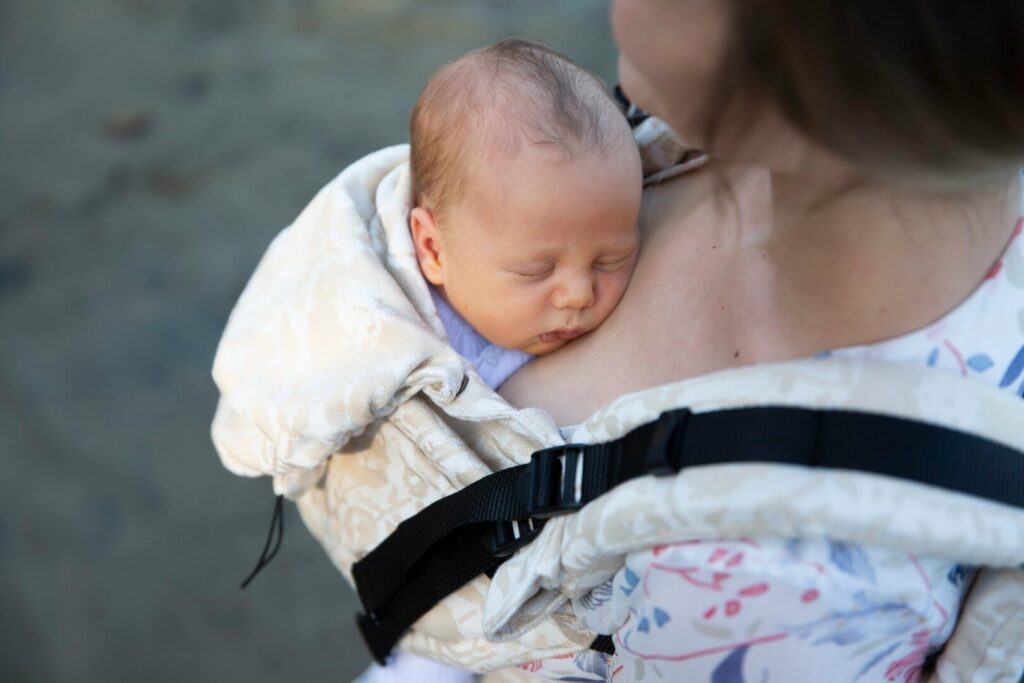
A structured carrier is usually one that consists of a waistband and shoulder straps, and held together with webbing and buckles. Structured carriers are great for quickly putting on and taking off again – clip, clip, and you’re done! These can also be used from newborn and will often adjust slightly in size to grow with your child as they get bigger. They are very supportive and sturdy, perfect for bigger adventures out of the house and as a staple to always have available if the time calls for it!
A few simple tips on picking the right structured carrier:
- Look for a carrier that supports a baby’s hips in the optimal hip healthy M position from newborn and beyond
- See if the carrier has been tested to the ATSM international baby carrier standards to ensure quality
- If you can, try before you buy to see if you like the set up and feel of the particular brand you’re interested in
Ring Sling
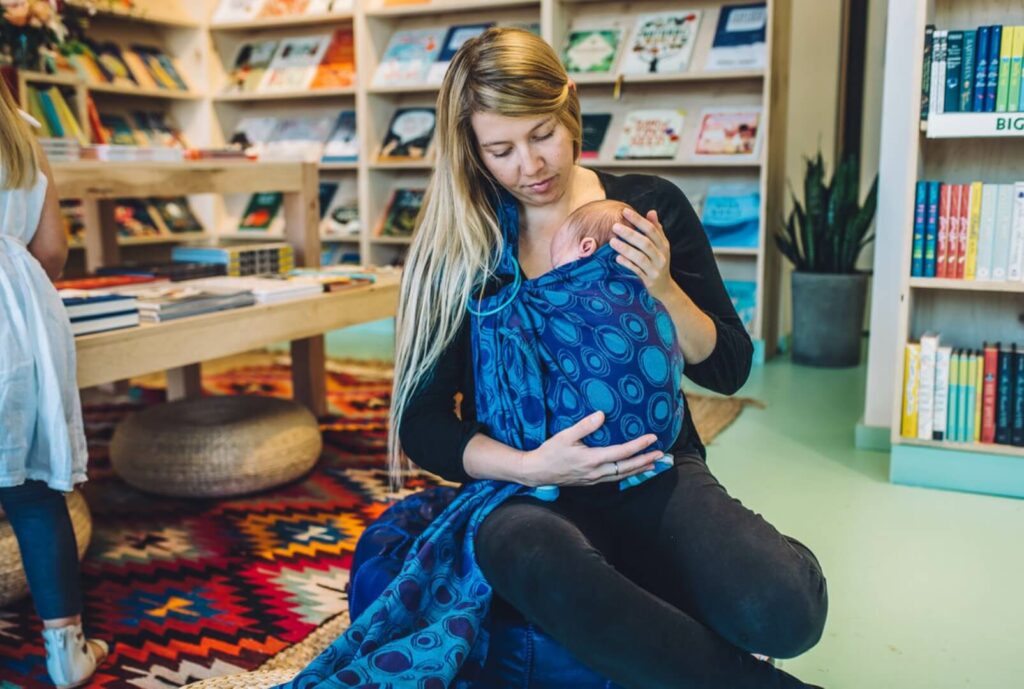
A ring sling is a piece of woven fabric (approx. 2m long) with two rings sewn together in one end. To make the sling, you simply thread the tail of the fabric through both rings and then back between them, to lock the fabric in place. The sling goes over one shoulder, with the baby on your opposite hip, held upright and seated, facing inwards towards your torso.
Ringslings have the hardest learning curve out of all carrier options. The process of making a seat, having the fabric in the right spot, and tightening in just the right places can be confusing at first. However, once mastered they are the quickest option, great for a quick cuddle, popping into the shops, and continue being practical to use as your child grows into a busy toddler.
The main downside is that it is a one-shouldered carrier. This means that you may struggle to lift one of your arms to do certain tasks (like hang the washing). Ringslings are recommended for a baby or toddler that likes/needs to be held for short bursts on occasions. If possible, get some help from someone more experienced (like a babywearing consultant) to make sure you’re as comfortable as possible.
Meh Dai
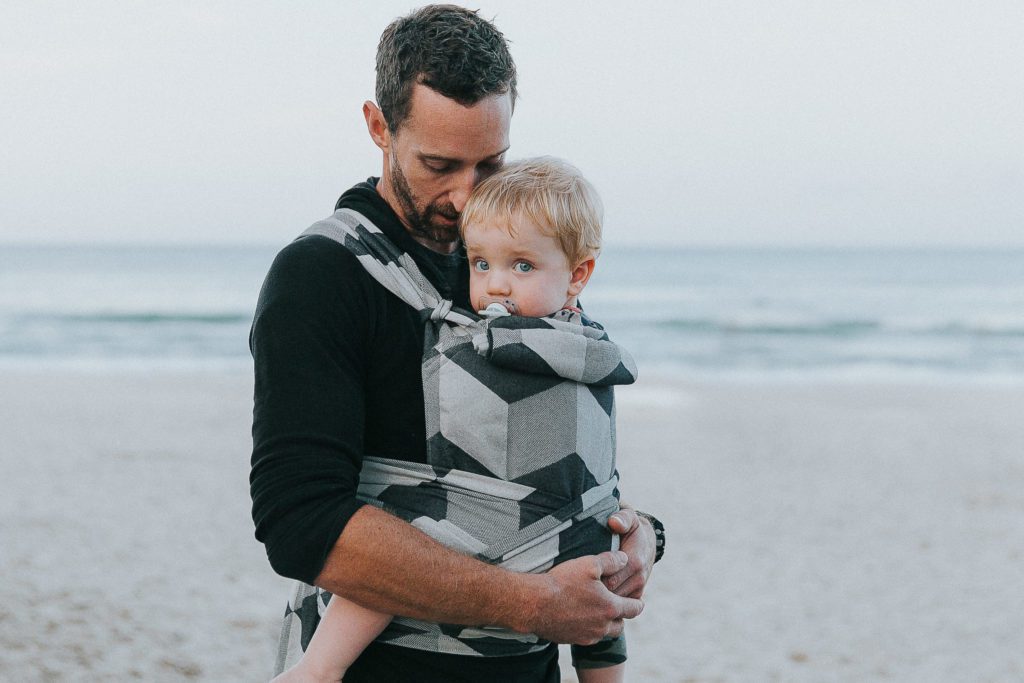
Originating in China, most Meh Dais consist of a rectangle/square panel of fabric with a strap on each corner. The bottom two straps are tied around your waist, then you put baby in the panel, and pull the top two straps over your shoulders and cross on your back, tying at the front, or back, depending on how much length you have.
The thing that most people like most Meh Dais is their fit. Instead of having to adjust all the straps each time someone else uses it (like a structured carrier), the straps are just pulled tight and tied each time. These are very easy to use and great for jobs around the house, or nap-time, because they are so comfortable.
Hip Seat
Hip Seat carriers are gaining popularity in Australia and for good reason. These aren’t a ‘hands-free’ option like other babywearing styles but they still offer you support to meet your baby or toddler’s need to be held.
A hip seat is able to be used on the front in the centre of your body with your child facing in or out, or on your hip, depending on what is appropriate at their age and development.
A simple solution, hip seat carriers are perfect for grandparents who want to pick up your little one but need some extra assistance in holding them. As well as anyone who suffers from arthritis or dexterity challenges that make it difficult to set up and adjust regular style carriers.
Woven Wrap
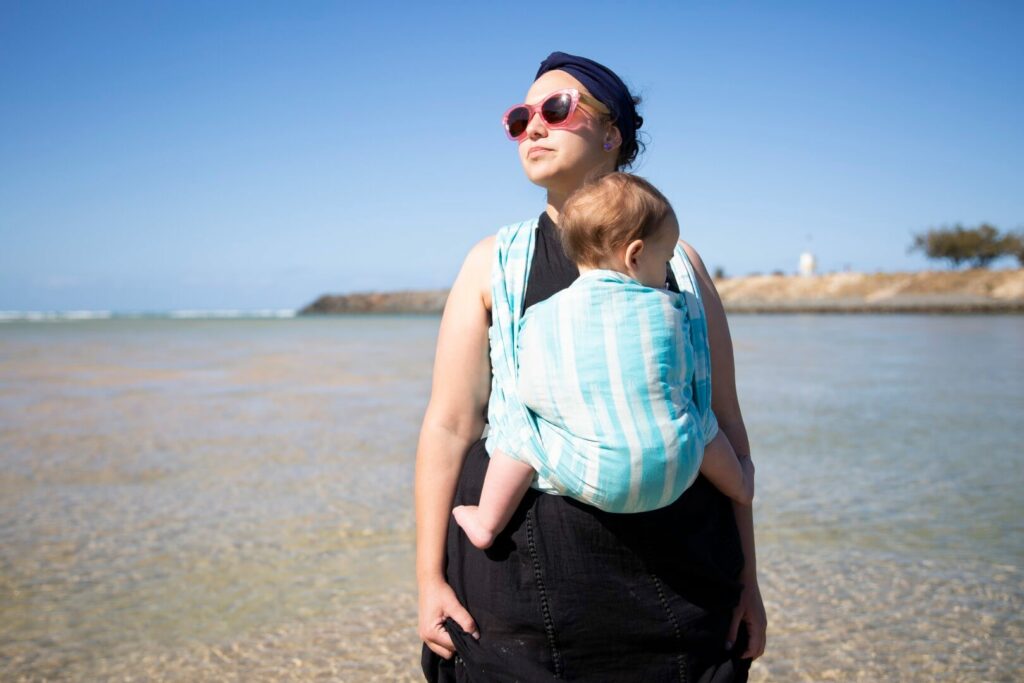
A woven wrap is a piece of woven fabric, usually around 70cm wide, and ranging from 2.7m (size 2) to around 5.7m (size 8) long. The patterns, blends, and thicknesses range greatly… from thin and floppy, through to thick and cushy.
Woven Wraps aren’t used the most commonly at present but by those who use them they are often described as the most versatile, adjustable baby carrier available. You can front carry, hip carry, and back carry from newborn to big kids. If you want extra support, you can add multiple layers, and if it’s hot, you can choose a carry that offers more breathing space.
The main downside is that it can be a bit of a learning curve when you get started. It probably will take a few video tutorials and practices to get the hang of your first woven wrap carry, Front Wrap Cross Carry. But practice makes perfect, and once you’ve mastered the basics, you can quickly pick up other carries, and continue to perfect your skills and increase your comfort levels.
So… what should you buy?!?!
Reading about baby carriers in an article like this is one thing, but you really can’t beat trying them on in person if it’s at all possible. If you do try them on in-person, having assistance from a trained babywearing educator ensures you get the correct advice and adjustments for you. That is the best way to figure out what baby carrier is going to fit best, and suit your situation.
But if that’s not possible, please don’t let it hold you back. Just jump in and try something! Buy whatever you can afford within your budget, and if it’s not right, sell it and try something else.
For many families, a baby carrier will be used daily, for many hours a day, and often for years (even through toddlerhood and beyond). Believe us when we say that finding the right baby carrier for you and your little one will be well worth the effort.
Happy Babywearing!



